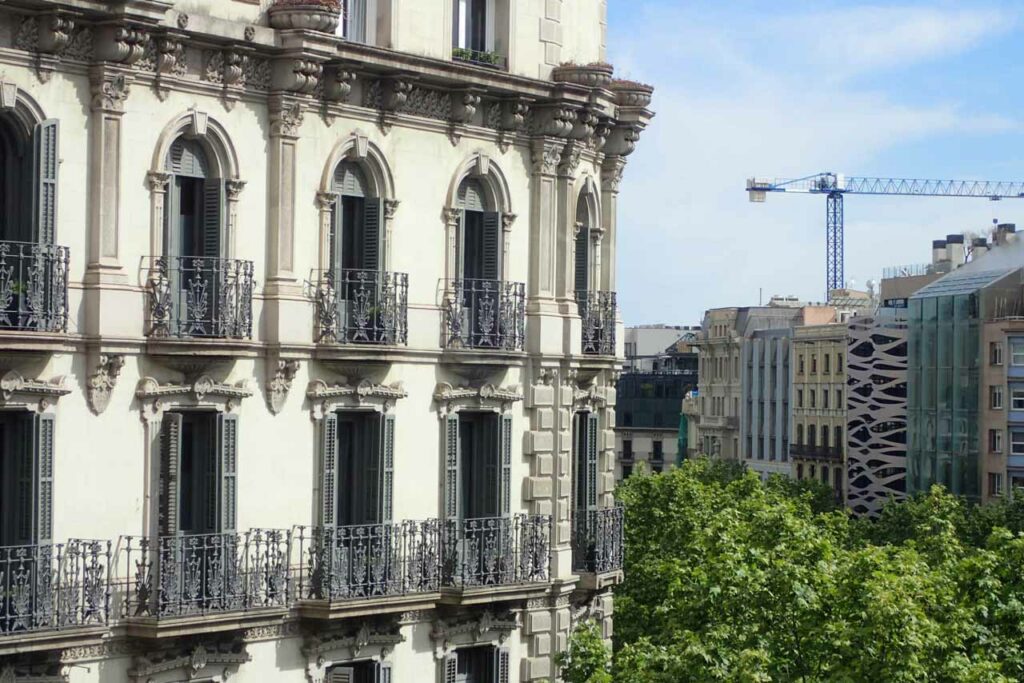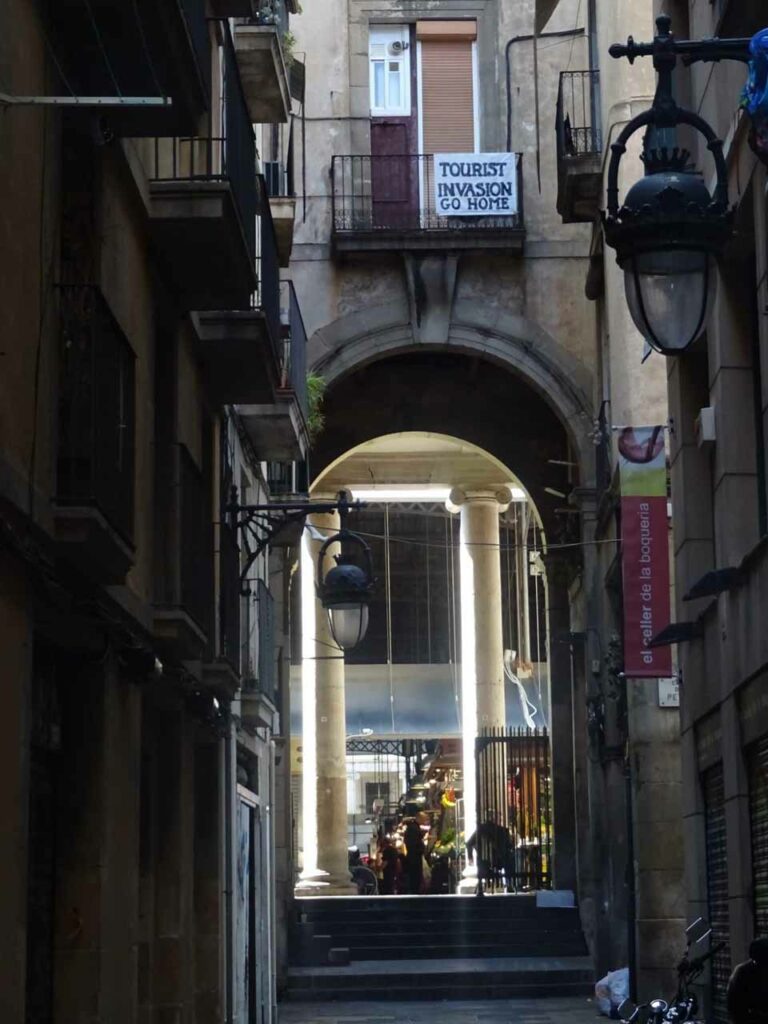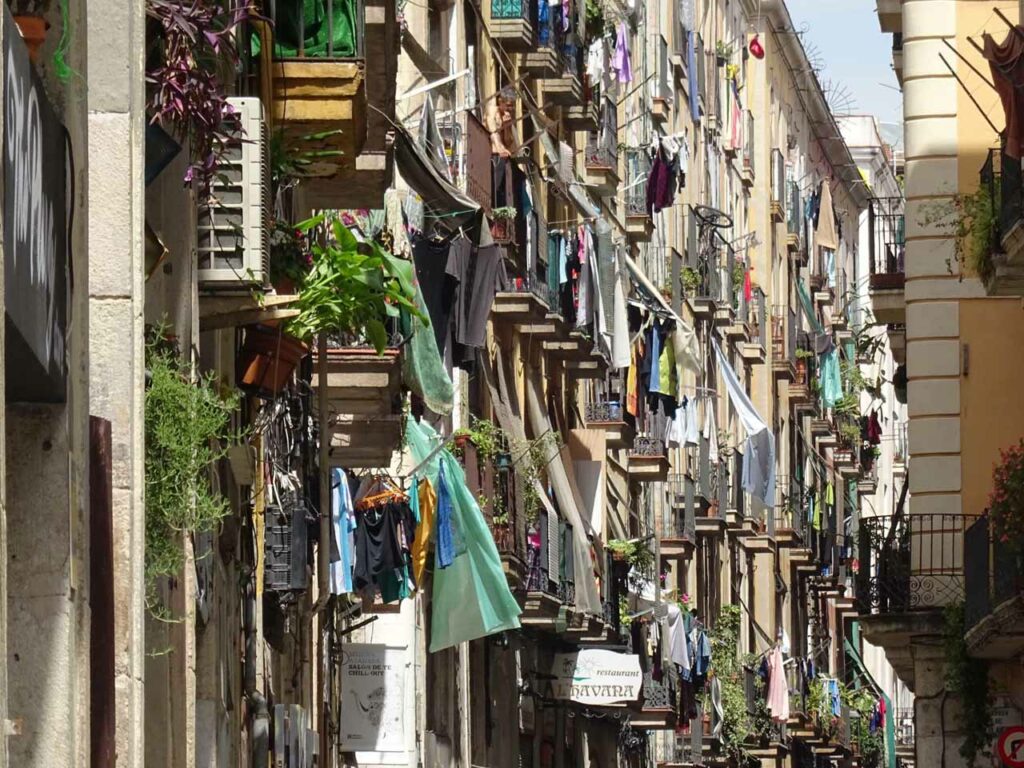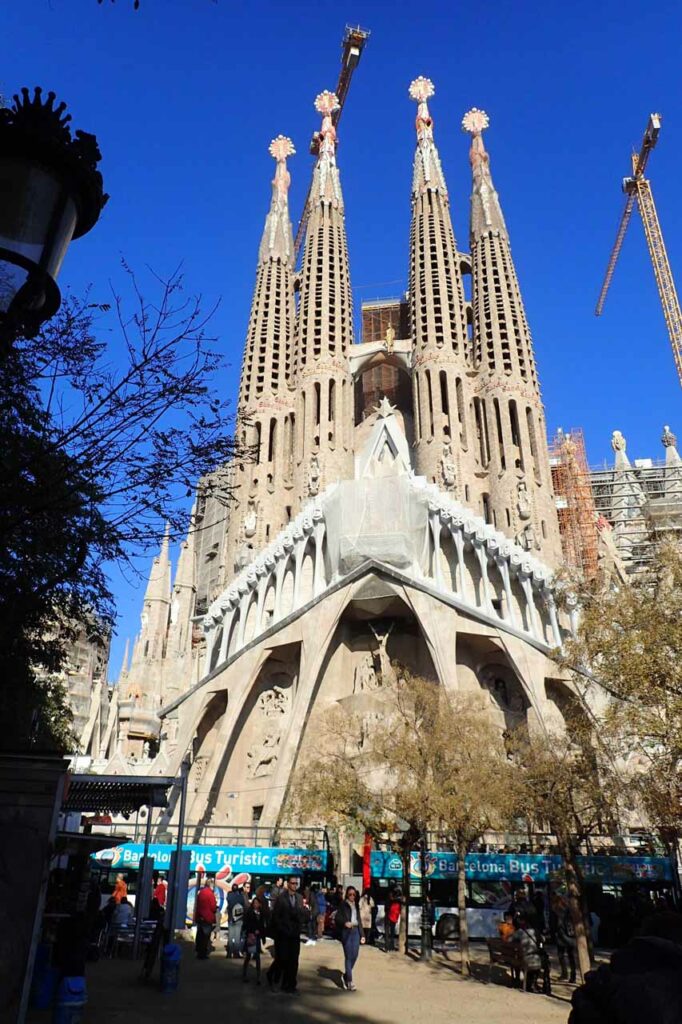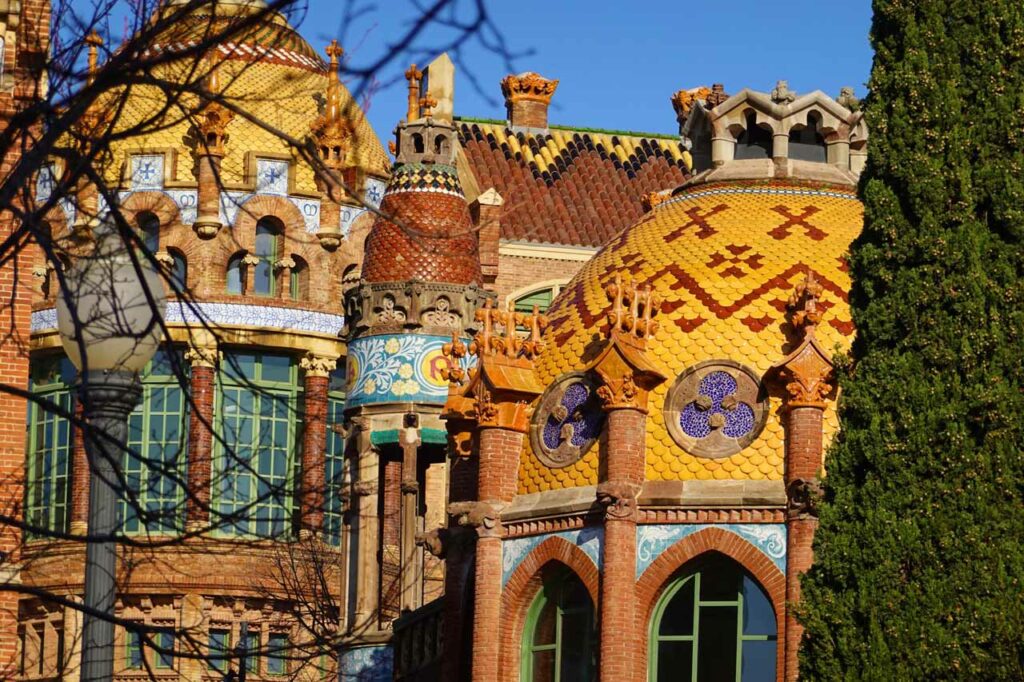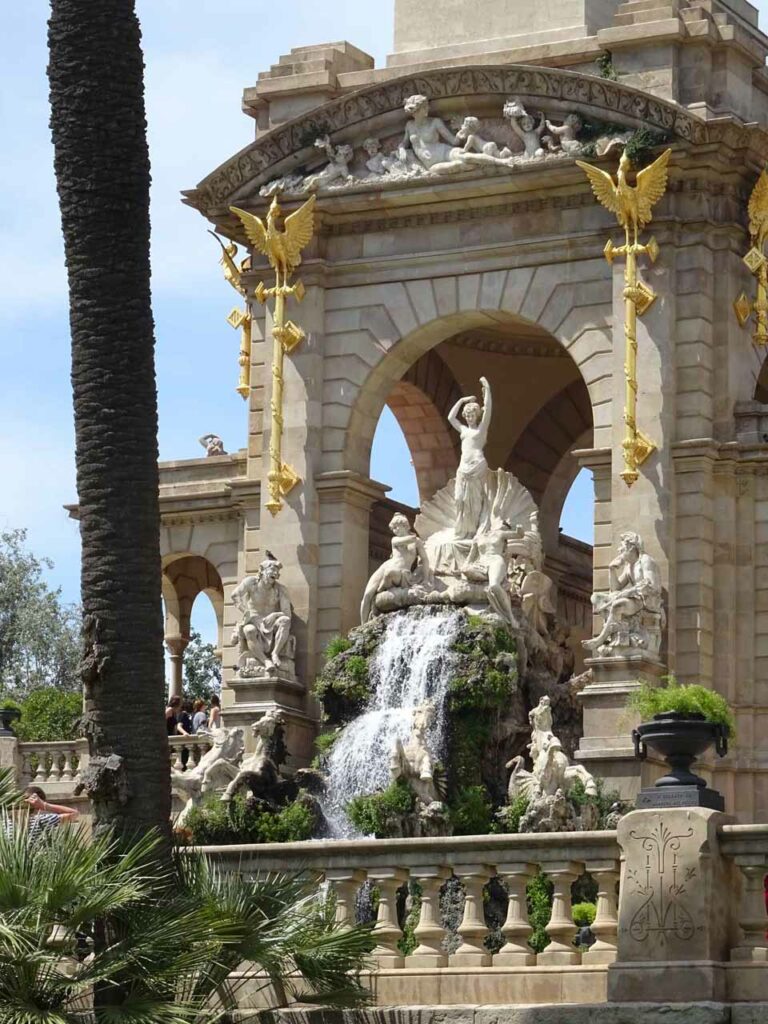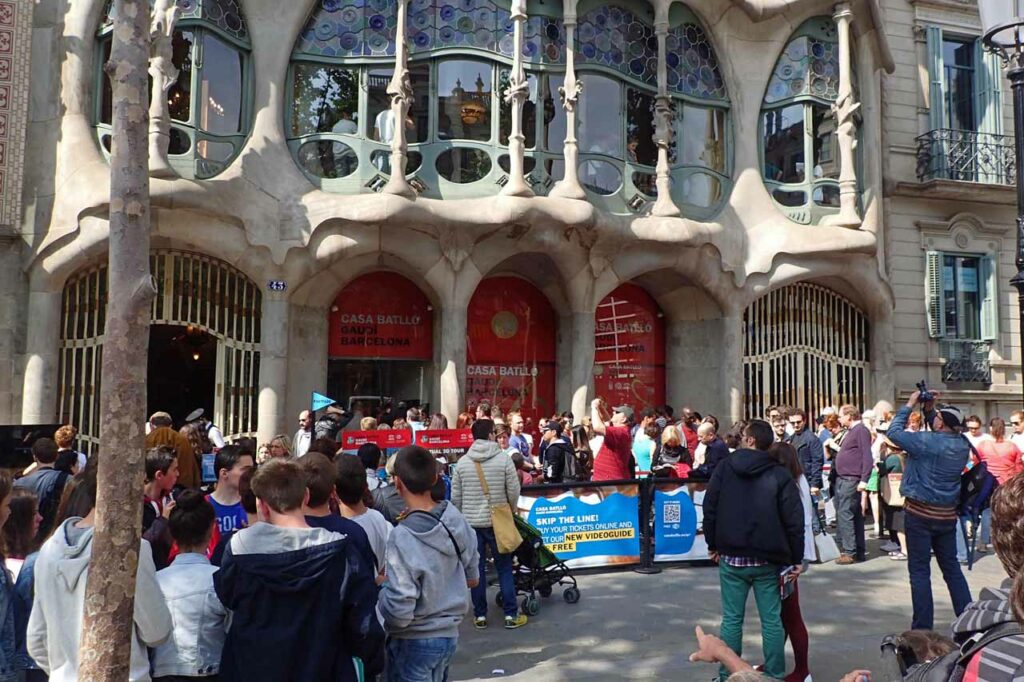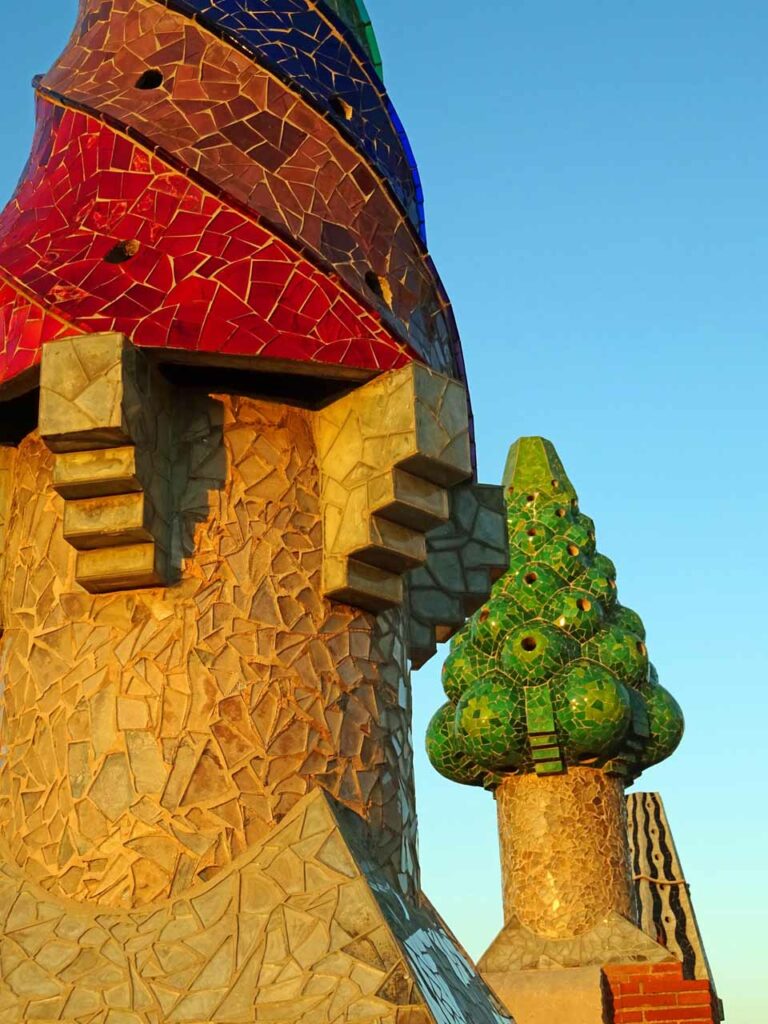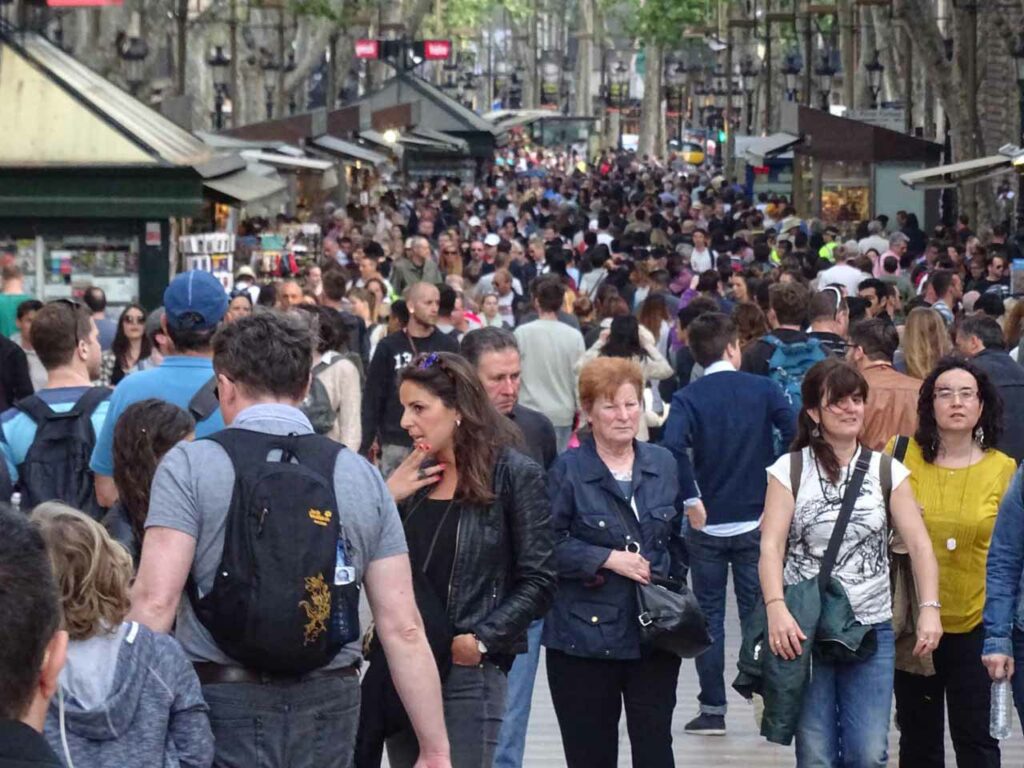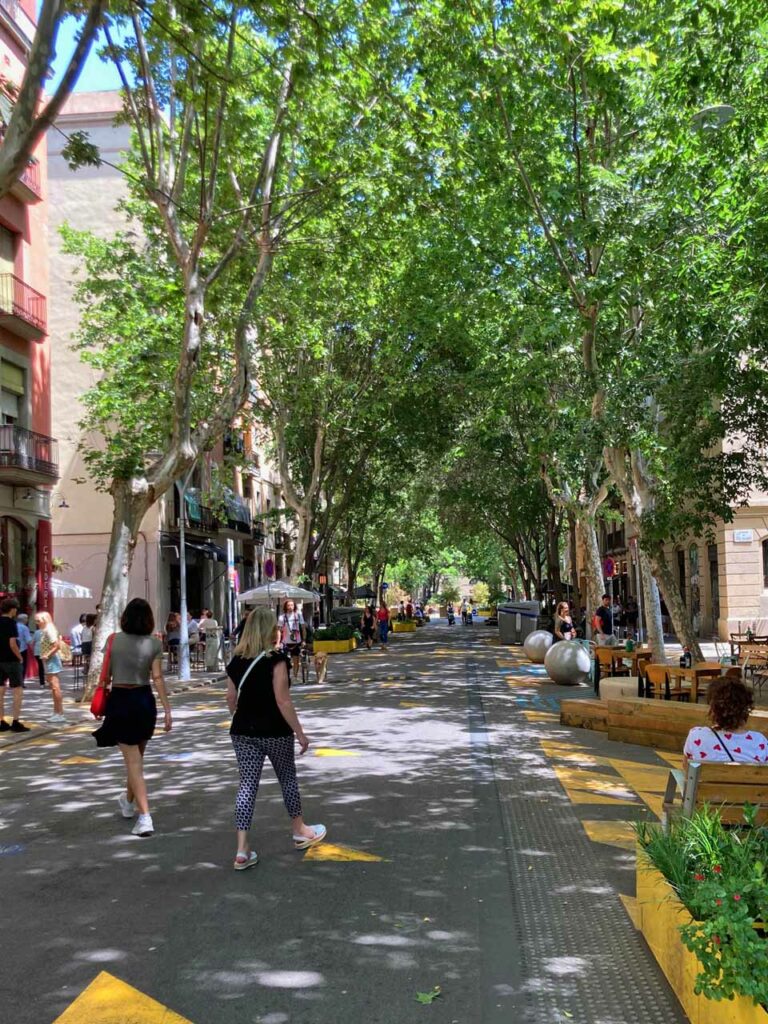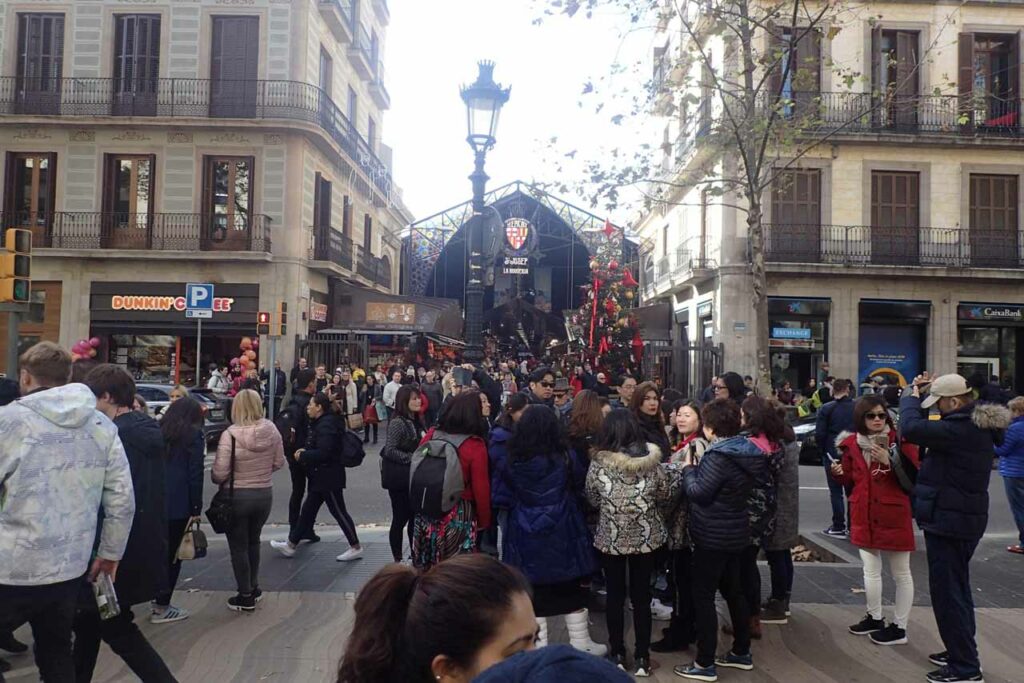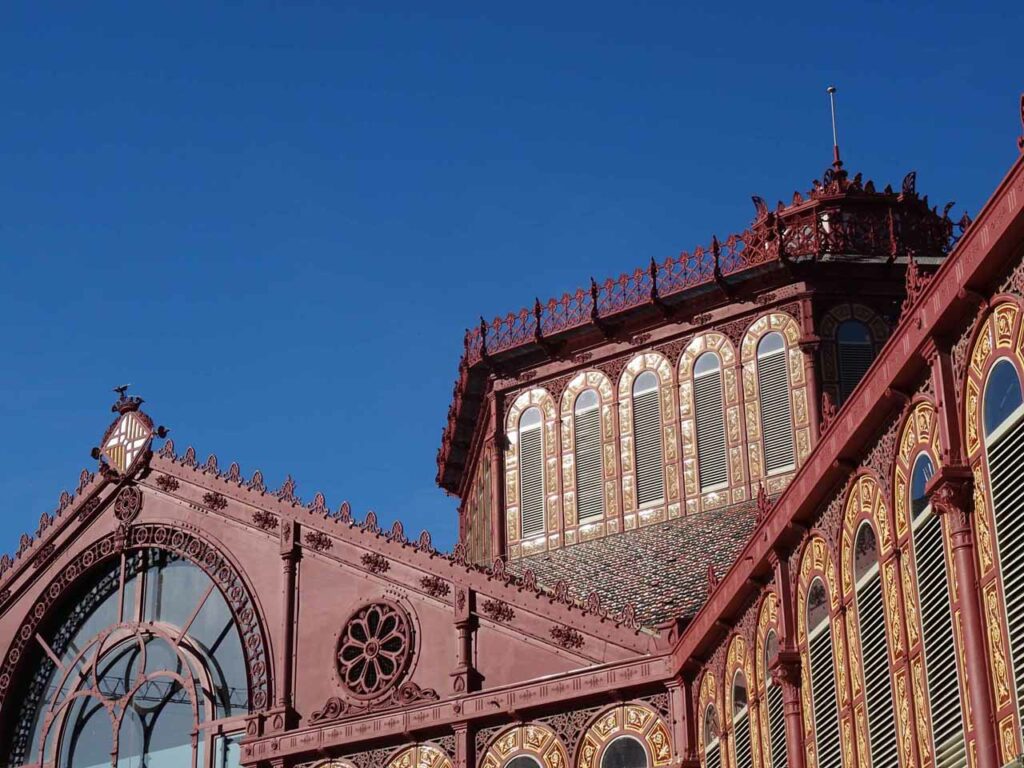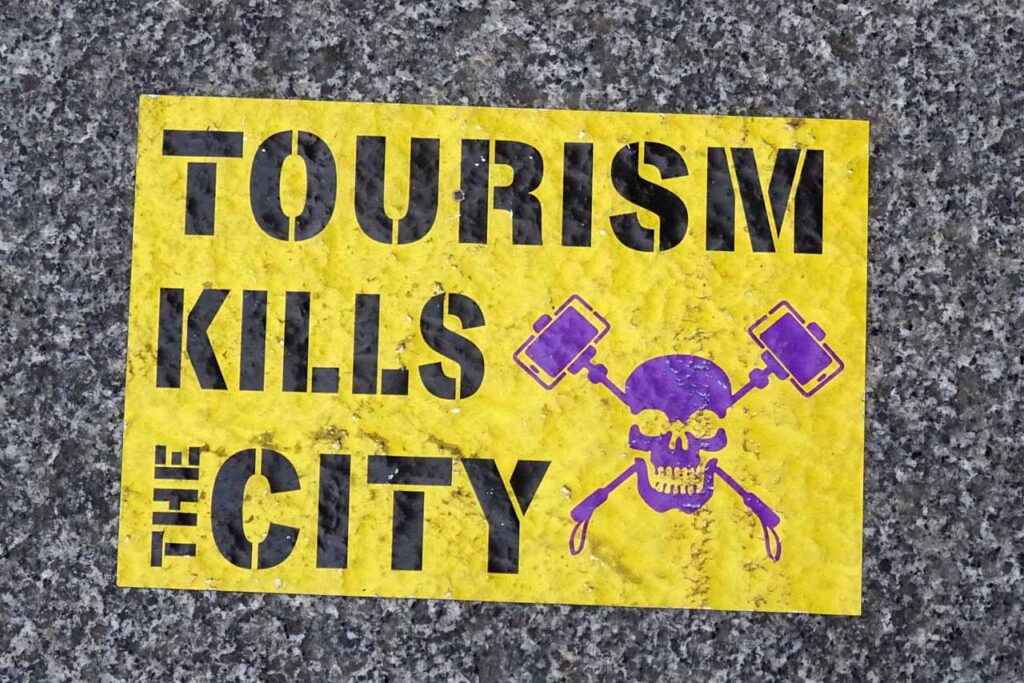
It’s common to read commentary about how tourism has ruined a destination. Clearly over tourism can be a problem. And Barcelona does have a problem with over tourism. There are, however, some consistent tropes in the arguments being made that should be retired.
In a Guardian article a few years back, Stephen Burgen argues that Barcelona has been ruined by tourism.
You can’t disagree that the queues for the tourist sites in Barcelona can be long. Nor that La Rambla is an overcrowded mess full of tourist tatt stores. (Though there is an effort to clean that up right now.) Nor that La Boqueria can be difficult to navigate and is increasingly about ‘juice bars and assorted take-aways.’
But wait
If you travel off season, you can generally book tickets to attractions online and completely skip queues. La Rambla may be overwhelmed with tourist crowds, but duck down a side street – particularly in the El Raval direction – you’ll find a community with its own unique culture and feel. There are some decent restaurants on La Rambla, though they are, admittedly, uncommon.
Just by avoiding the main tourist attractions and seeing some alternatives you can have a much better trip, without contributing to the issues of over tourism.
And despite having to fight through the tourist hordes, you can buy excellent fresh fruit, vegetables, seafood, meat and supplies at La Boqueria. I’m assuming fresh rabbits don’t count as ‘assorted take-aways’.
In short, tourism has affected Barcelona and the way people live, but life goes on. Barcelona has not been ruined by tourism.
Be like the locals
Residents have adapted to the tourist onslaught in various ways. Sometimes by posting stickers (above), though most just do their best avoid the crowds. One way is to avoid the major tourist attractions. How frequently do you think Barcelona residents want to visit La Sagrada Familia or Casa Batlló? I have a local friend who only went to La Sagrada Familia for the first time recently…for a work function.
Do Parisians visit the Eiffel Tower on a regular basis, would you think?
Surely the main difference the tourist crowds make is to tourists themselves and traffic flow in the immediate vicinity. If you don’t want to get stuck in queues, don’t go to Casa Batlló : Easy.
And if you really need to get a Gaudí fix without the crowds, try some of the less well-known attractions such as Palau Güell.
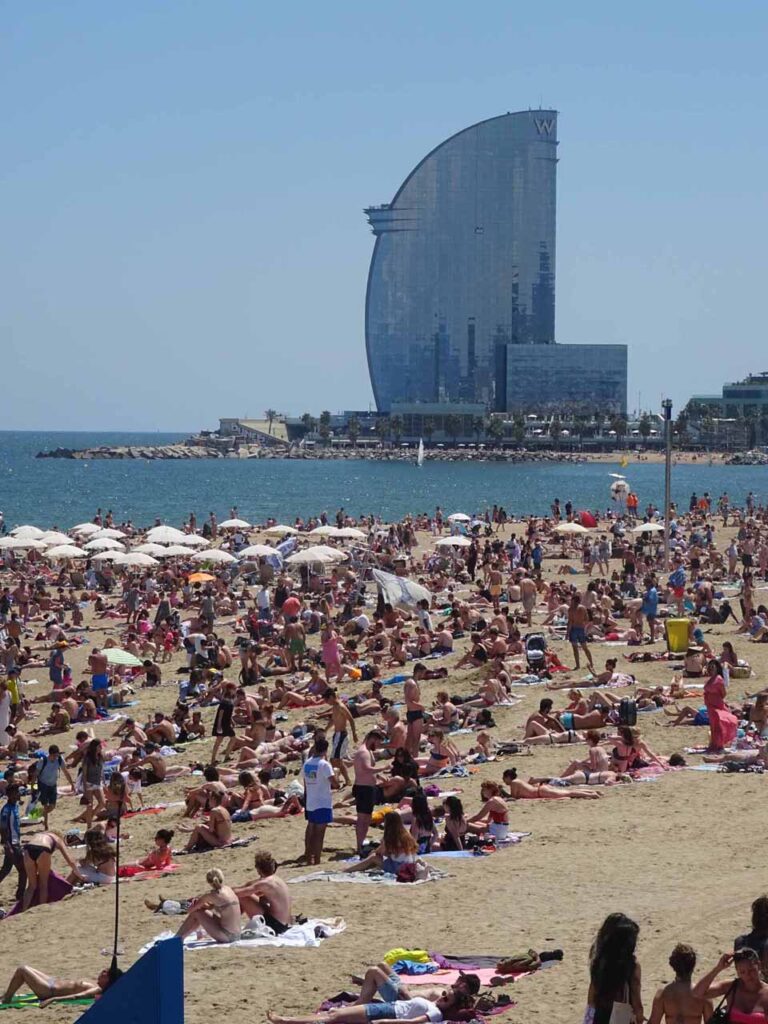
Okay, I’ll admit, it doesn’t look great in the image above. But guess what? Most locals I know don’t go to Barceloneta beach.
The same is true of La Rambla. I do my best to avoid the place, though there are some plant sellers with more range than any other suburban places I’ve found.
La Boqueria is difficult. Go early. Avoid the stalls that serve the tourists at the entrance; don’t get in the way of actual shoppers. Head to the back where you’ll find stalls like the amazing Bolets Petràs, specialising in all things mushroom, but also featuring a stunning selection of edible flowers and baby vegetables. This is not a tourist-focused business. And there are plenty more.
Hang around near the La Rambla entrance and you’re likely to want to punch a selfie-stick-weilding tourist – it isn’t great. If this your only experience, you may well think that tourism has ruined Barcelona. But the entrance to Boqueria isn’t Barcelona. Just a small microcosm.
And while paella in ‘a startling shade of chrome yellow’ is a sad reality, the dining scene in Barcelona is otherwise incredible. Arguably the city couldn’t support so many fabulous restaurants without the tourism.
Retire the tropes
Burgen argues – or maybe the sub-editor does, it’s hard to know – that Barcelona was one ‘of the coolest destinations in Europe just two decades ago.’ This is the standard backpacker trope that any destination was much better before it was ‘discovered’.
The crux of that trope is that we travellers (as opposed to tourists) have secret knowledge and are pioneers out in the big wide world ‘discovering’ new destinations. It rather ignores the fact that people already live in those destinations. It was a tired trope before low cost airlines and mass tourism. It is well past time to retire it.
But I will concede a point. I first visited Barcelona around 30 years ago and did feel a sense of excitement about what I experienced.
The difference is technology.
Travellers today are slaves to online rankings. Skip the top 10 ‘sights and landmarks’ on TripAdvisor if you want to get a taste of Barcelona without the mank. Or at least be prepared to find crowds at these attractions.
Has technology ruined travel?
Unfortunately, the on-line-listicle culture does filter into the less-travelled lane. I started to notice queues forming near a favourite local restaurant around its opening time. It took me a while to figure out what that was going on. Somehow it had managed to take the top spot in TripAdvisor for being the best restaurant in town for paella. Thus the queues.
Compared to the ‘chrome yellow’ mush that passes for paella in most tourists places, this restaurant does quite a good job. But it’s hardly the best paella in town. TripAdvisor users are pretty easily led.
And often wrong – the TripAdvisor screenshot below lists one attraction, has a photograph of a different one, and a review of yet another. I was going to say you couldn’t make this shit up, but clearly some duffer has. People trust this rubbish. “The wisdom of the crowd?” Spare me.
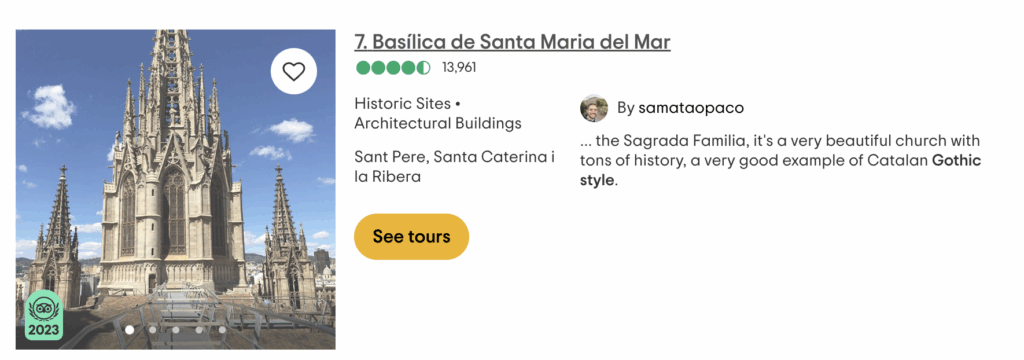
If the culture of unqualified recommendation in the lifestyle media wasn’t already bad enough, TripAdvisor takes it to a whole new level. (There’s a whole other blog post in this).
Behaving badly as a tourist doesn’t help. And Barcelona has more than its fair share of badly-behaved tourists. But despite that onslaught, Barcelona’s character is alive and well. You just need to do what the locals do and navigate away from the tourist crowds to find it.
Where to stay in Barcelona
Heading to Barcelona? Check out our hotel recommendations here.
What to see and do in Barcelona
Check out our recommendations for dining in Barcelona and what to see and do in Barcelona.
